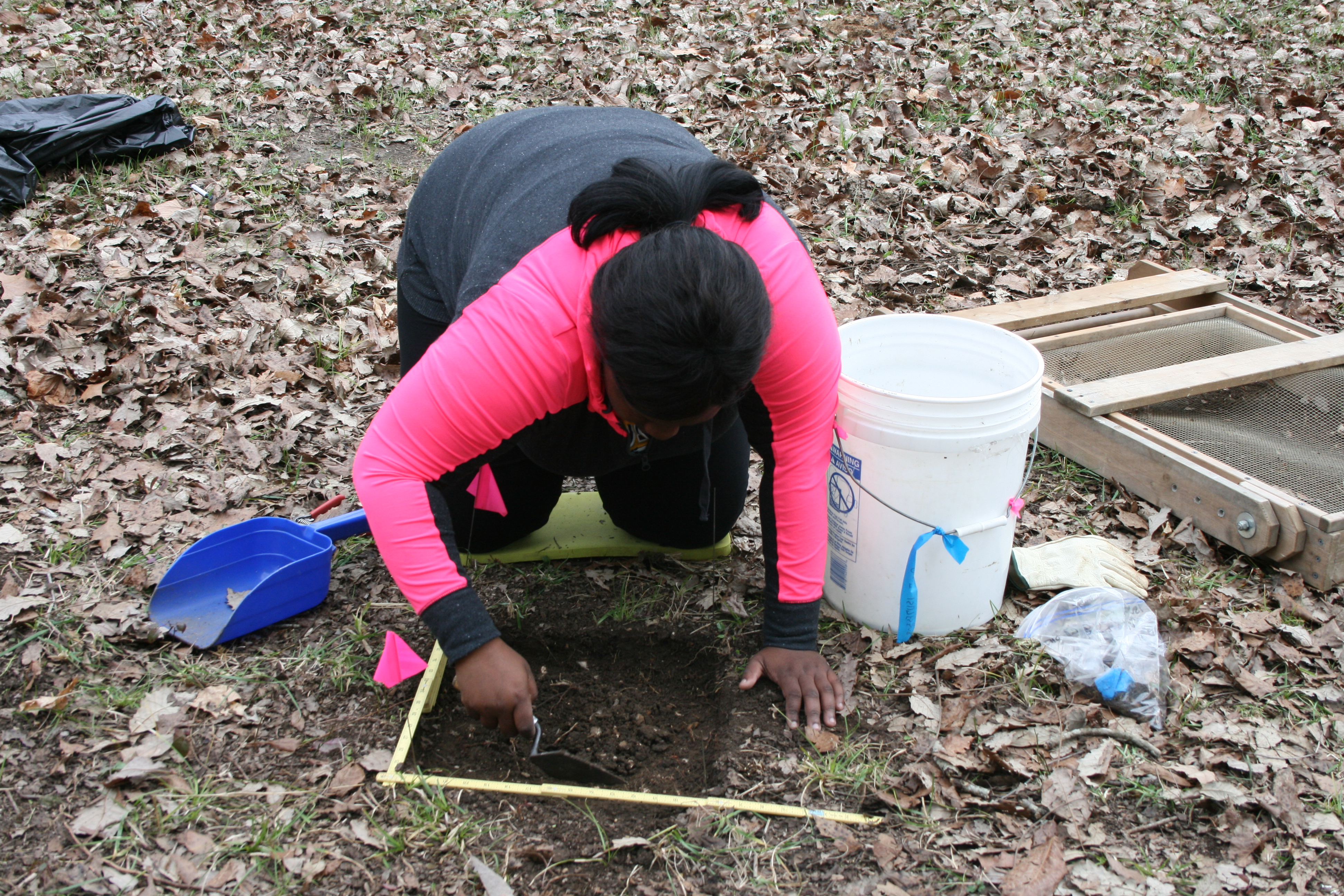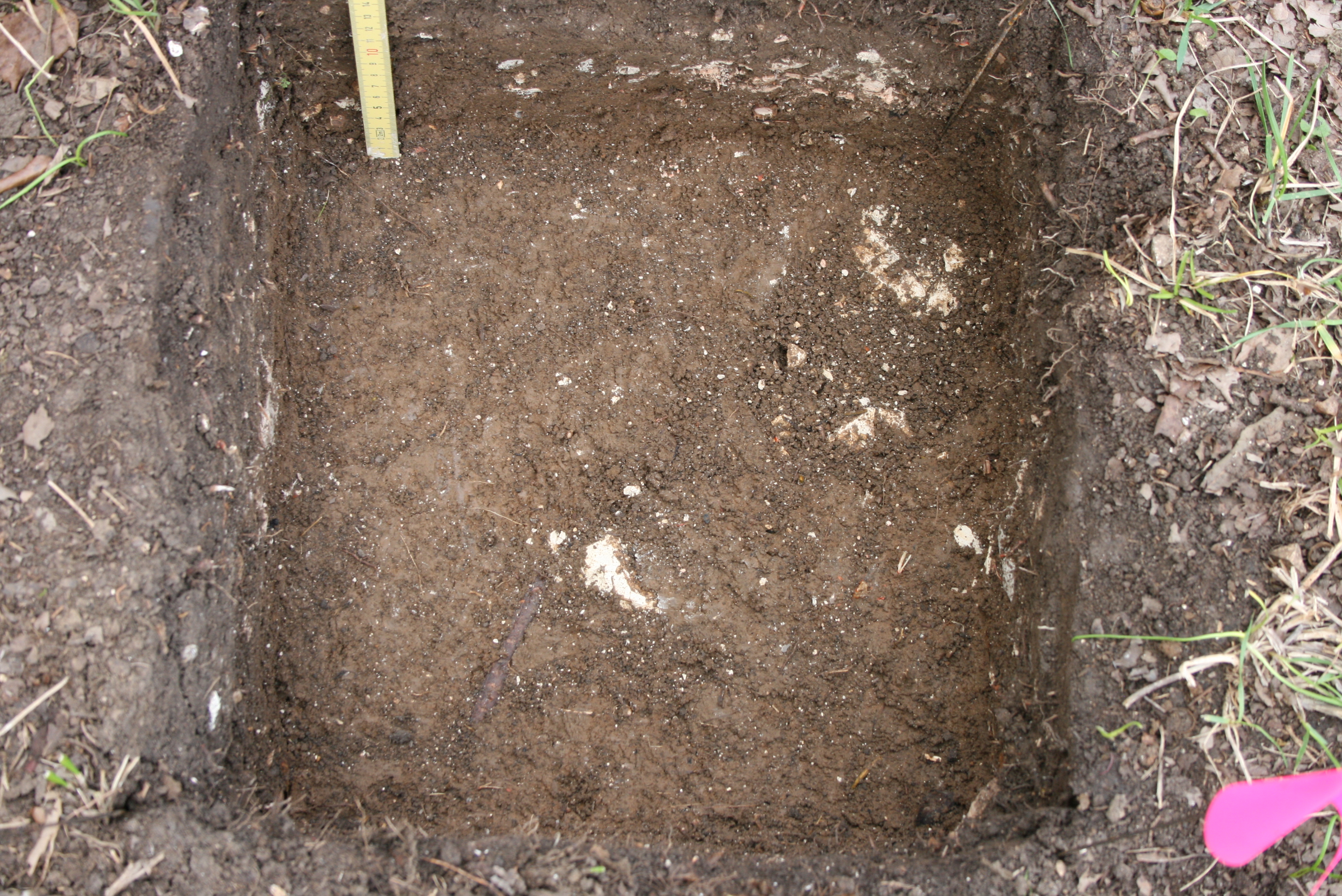Hello
Readers,
Today (February 2, 2017) I got my hands
dirty. Since I am new to field school every day is a learning experience for
me. I am super excited to finally use the skills I have learned while taking
Archeology/ Anthropology courses. I began excavating inside of Fort
Confederation. The post hole that will be discussed is post hole number 6,
which is being excavated as a 35 cm-square unit before placing a sign in this
particular area. The purpose of this future sign is to inform tourists about
the exact location and history of Fort Confederation.
Before excavating in this area, a field
specimen number (F.S. #) was assigned. A “F.S. #” is a number that signifies a
location and all contents found in that location. Contents of one F.S. # should
never be mixed with contents from another F.S. #. After assigning the location
a F.S. #, proper excavation tools were gathered, and I began excavating this
unit. The first layer of soil (Layer A) was dark in color and lots of gravel
was scattered throughout the area, possibly from the construction of the 20th-century
road that was put inside the fort. I hypothesized this is where the gravel came
from because the road is about 12 ft south of the post hole. In addition, a
small piece of green bottle glass was removed from Layer A. While excavating
Layer A and approaching the second layer (Layer B), charred wood was removed
from the unit. It is not clear what purpose the charred wood or glass served in
the fort, but they are probably associated with the 1794-1797 occupation of Fort
Confederation. Once Layer B was visible it appeared to be filled with bits of chalk.
Layer B has not been completely excavated so there are no further details about
it. During the next part of the excavation, I hope to excavate beyond the third
layer (Layer C) and be able to present more educational details about the unit.
It will be interesting to know if there are artifacts associated with Fort
Tombecbe even deeper.

Above is a photo of me removing Layer A. Below is a photo of the unit we're digging for panel post 7, but it has the same Layer B chalk (visible in the profile wall) that I was working on today.
